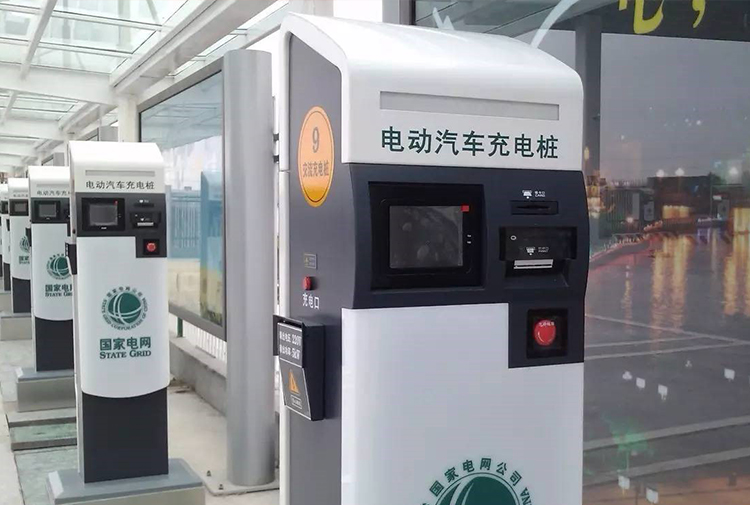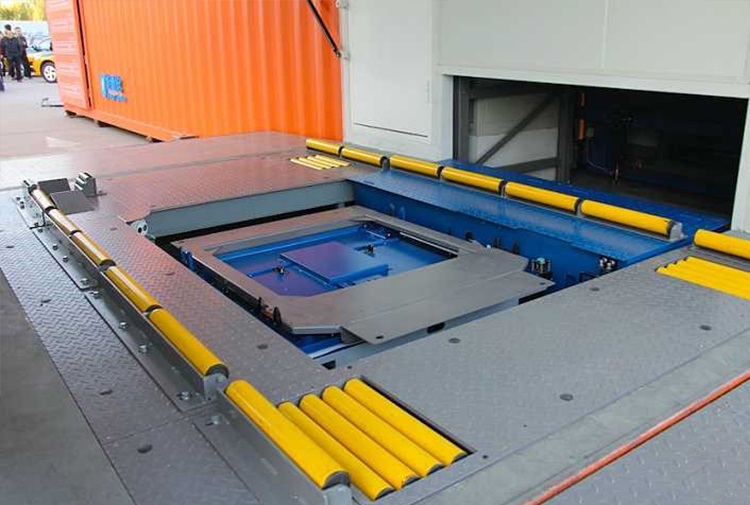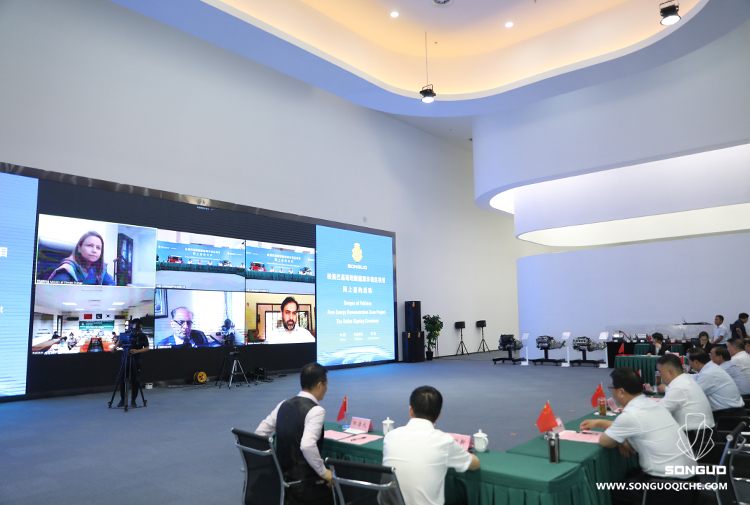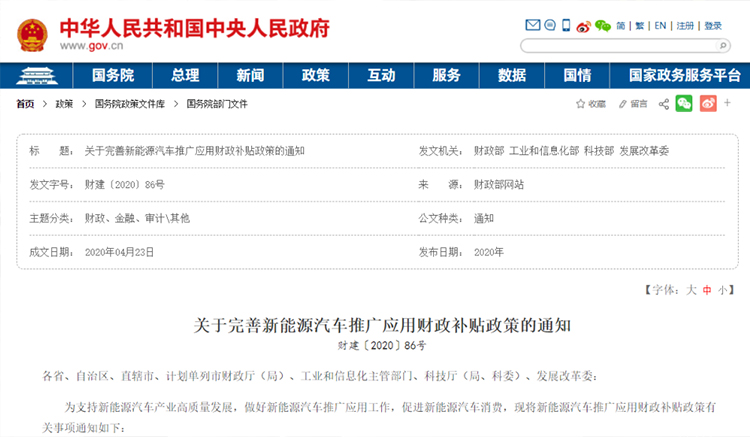BSS(Battery Swapping System) of New Energy Vehicles lies in the Middle of a Whirlwind Songuo’s First Worldwide Pilot Project Launched
On April 23, the Ministry of Finance, the Ministry of Industry and Information Technology, the Ministry of Science and Technology, and the National Development and Reform Commission jointly issued the "Notice on Improving the Application of Fiscal Subsidy Policies for the Promotion and Application of New Energy Vehicles", which proposed a clear battery swapping model with awards. It stipulates that the selling price of new energy passenger cars without subsidies must be less than CNY 300,000 (including CNY 300,000). In order to encourage the development of a new business model of "battery swapping", vehicles in the battery swapping model may not be subject to this regulation.
The battery swapping model clearly lived in the middle of a “Whirlwind” with favorable policies.
(Pic from internet)
Beijing, Guangzhou and other places have actively promoted EV taxis and battery swapping technology. In July 2019, Beijing issued the "Notice on Renewal of Taxi Cars to Pure Electric Vehicle Funds Rewards Policy", which clarifies that pure electric taxis should be equipped with charging and battery swapping compatible technology, mainly on quick battery swapping. Guangzhou plans to electrify approximately 25,000 taxis by the end of 2020.
According to data from the China Electric Charging Infrastructure Promotion Alliance, as of March this year, there were 433 new energy vehicle charging/battery swap stations in the country, mainly concentrated in coastal areas with a high penetration rate of new energy vehicles. During the same period, there were relatively more battery swapping services in inland areas such as Sichuan and Hunan. As for the charging of new energy vehicles, "slow charging is the main factor, fast charging is the second factor, encouraging the battery swapping" has gradually formed a consensus.

(Pic from internet)
Slow charging has always faced the problem of "difficulty in pile construction" and it is difficult to achieve large-scale comprehensive coverage. According to statistics, about 70% of domestic users do not have fixed parking spaces, and only 40%-50% of new energy vehicle users can install exclusive charging piles. The battery swapping mode can reduce the threshold for consumers to purchase through the separation of vehicles and batteries, and solve the problem of low residual value of new energy vehicles. Unified battery management and centralized slow charging can effectively ensure the safety of charging and battery life, remote control of the station, and the consistency of the battery pack through the pulse current method, which is actually an active safety; at the same time, it can help the urban power grid on peak cut, and absorb more renewable energy. The step-by-step utilization of “retired” batteries derived from the battery swapping mode has a huge value digging space. In the future, through big data operation, it can become an important part of the energy internet and smart city construction.
According to relevant statistics, at present, the number of taxis and online ride-hailing cars in the country is about 3 million to 4 million. Based on the average daily milage of 300 kilometers for taxis and online ride-hailing cars, the average daily price of battery swapping is CNY 20,000 to 30,000. The market scale of the to B battery swapping mode is close to CNY 90 billion.
As the arrival of battery swapping mode “whirlwind”, energy enterprises such as State Grid, Southern Power Grid Company etc. have been actively making overall arrangement. Moreover, the entering of subsequent EV companies and battery manufacturing giants will drive the development of battery swapping industrial chain. Due to the promotion of policy encouragement and technology breakthrough, strengths of the battery swapping technology route has gradually shown.

sketch map of the battery swapping station(screenshot from internet)
So far, China has formulated and launched 26 national standard and 18 industry standards on terms related with battery swapping mode, battery system interface, battery swapping station, operation service network, operation management, vehicle safety on battery swapping, evaluation method and so on. During the Two Sessions, Miao Wei, Minister of the Ministry of Industry and Information Technology of China, presented to continuously expand the construction of charging and battery swapping station as infrastructure facility, encourage the connection among various charging and battery swapping facilities. The “charging pile construction” was expanded into “increase charging piles and battery stations” in the Report on the Work of the Government. With support of the policy, the landing of battery swapping mode will speed up and another whirlwind on new energy vehicle industry development is increasingly clear.
Songuo Motors is always insisting on double models operation( which battery swapping was the main energy refueling method and plug charging was the auxiliary energy refueling method). In 2019, Songuo Motors cooperated with SAMSUNG SDI, which is one of the global three giants in driving battery, and promoted the battery swapping system based on the core technology integration of battery cell from SAMSUNG SDI and battery pack from Songuo Motors. On 19th May of this year, under the witness of the official of Ministry of Climate Change of Pakistan, official leaders of Dezhou City and Yucheng governments, seven enterprises including Songuo Motors from China, South Korea and Pakistan, signed MOU to establish the Songuo-Pakistan e-Trike & BSS Pilot Project together. Together with the BSS landed as infrastructure facility of Pakistan, Songuo Motors is officially driving on the road of “China–Pakistan Economic Corridor”. The signing ceremony was held via video networking in 4 different venues: Islamabad & Lahore of Pakistan, Seoul of South Korea, and Dezhou National High-tech Zone of China.

Dr.Naveed Arshad of Lahore University of Management Sciences, founding partner of Songuo Systems, noted that Pakistan, as one of the most vulnerable countries from climate change, direly needs EVs to reduce air pollution in its cities. The business model of Songuo Motors is that it has split the cost of vehicle and battery into two different businesses to make the EVs affordable to the public while creating a new business for oil companies and other companies interested in battery leasing business.
Please contact Songuo Motors if there are any copyright infringement on the screenshot and photos. We will handle it as soon as possible.





